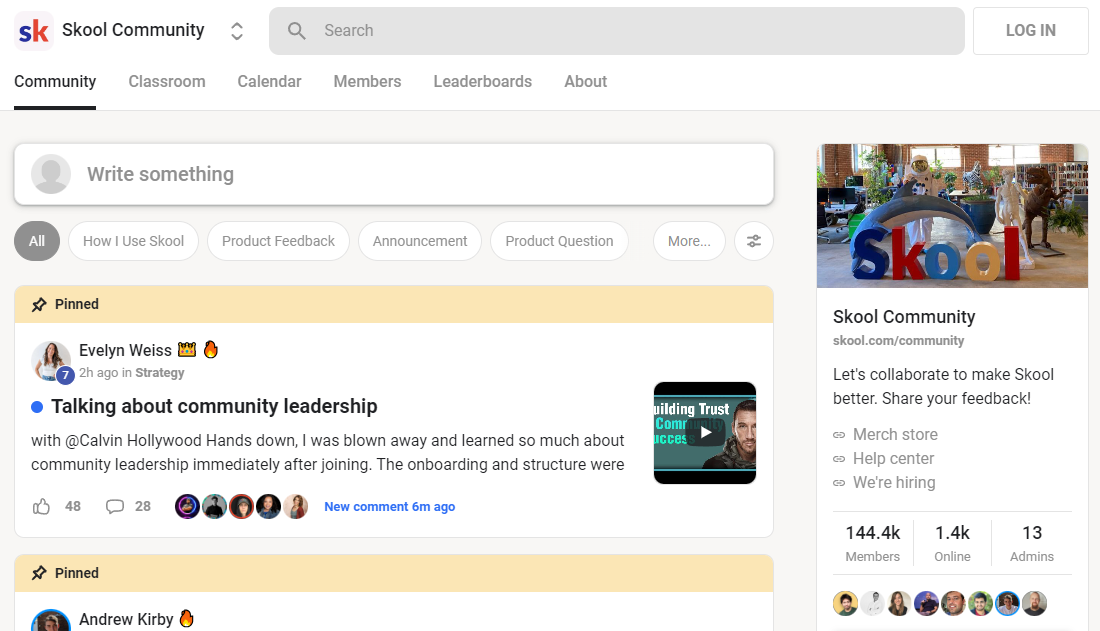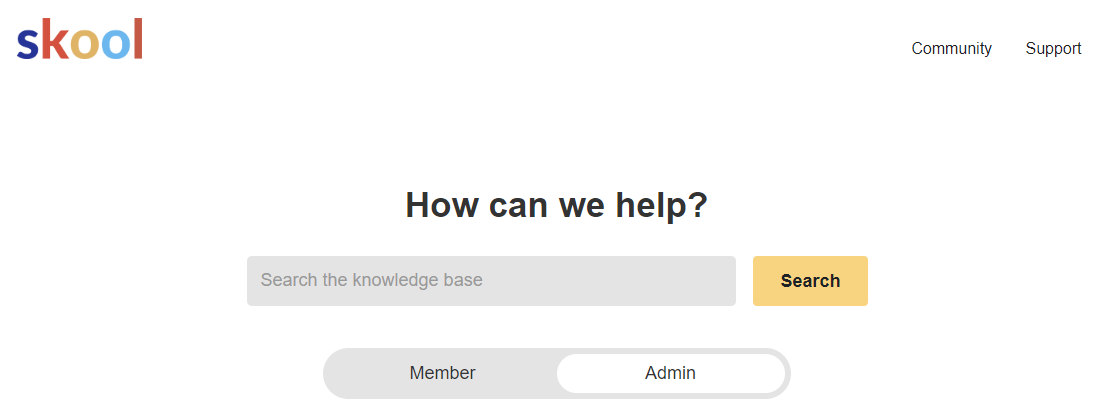Skool offers best-in-class gamification features that increase interaction. For instance, participants can gain degrees based on their participation, which open program web content and various other incentives that even more inspire them.
Previously, creators needed to use different devices for holding courses, constructing neighborhoods and managing email advertising and marketing. This developed a disjointed experience for both developers and their target markets.
Creating Courses
Skool has a straightforward, easy to use user interface and focuses on community building and program organizing over various other functions. It permits developers to produce a lively neighborhood for their training courses and mentoring programs by linking them with the right audience. This likewise helps them monitor the health and wellness of their web content business with the help of a basic control panel.

To begin, an individual can enroll in a cost-free 14-day test of Skool. After that, they can pay $99 a month for the system to hold a single area. There are no other pricing choices readily available for the moment. Skool likewise processes payment and pays developers weekly, yet it does bill a 2.9% transaction charge.
One of the unique elements of Skool is that it can be used to develop interactive training courses. These can consist of real-time webinars, group projects and real-time conversations. These kinds of courses urge engagement and rise training course conclusion rates. Furthermore, Skool’s gamification functions assist to motivate area participation. For instance, members can gain factors and unlock course content when they get to specific degrees in the community.
Individuals can additionally make use of the social feed on Skool to publish updates and engage with others in the community. The feed appears like a Facebook team, but with a much more controlled method of publishing. This assists to stay clear of the type of spam and misuse that happens on various other social platforms.
Taking care of Communities
Skool is an extremely straightforward platform to make use of, for both participants and admins. Its simpleness is one of its primary selling factors– when somebody joins your neighborhood they will not be faced with a lot of choices or functions that can hinder their experience and confuse them.
The system starts as a personal group by default, but you can easily change this to open your community to any individual that you wish to be part of it. Once you’ve done this you’ll see a social feed like you would on Facebook Groups or WhatsApp (but without all the scam stuff and swearing).
You can also add a class tab to your neighborhood that you can make use of to share instructional web content with your members. This function is especially beneficial for areas that are concentrated on learning or professional advancement as it assists to create an instructional framework and makes it easy for participants to track their progress. Furthermore, the system has gamification aspects that allow members to make factors by suching as articles or comments. When they get to a certain level they can open sources, such as courses, even more driving interaction.
The various other awesome thing is that Skool has a mobile application, similar to Mighty Networks or Slack, so participants can stay on par with your area and connect on the go. This is an excellent means to motivate and engage your participants and to help them get support from each various other when they need it, rather than just turning to you for answers.
Skool Metrics
Skool focuses on gamification, allowing individuals to earn points and badges for their contributions. This inspires participants to engage with the neighborhood and contribute to conversations. Subsequently, this helps them level up and unlock advantages like video clips and other web content. Admins can likewise establish programs to be opened at details levels to additional drive engagement.

The Skool interface is spick-and-span and user-friendly. Its main features include the Community tab, which looks just like a Facebook team feed. Below, customers can upload comments and text as well as upload images, web links and videos. Members can likewise watch each others profiles and get in touch with them. Furthermore, customers can create personal teams in the neighborhood to discuss specific topics.
An additional feature of Skool is the Classroom tab, which is similar to a YouTube livestream or Zoom conference. Using this, administrators can host trainings and webinars for their students. They can additionally add occasions in the schedule to stay upgraded on upcoming events and Skool Metrics.
Nevertheless, some aspects of Skool could use renovation. As an example, the platform isn’t versatile when it involves money making as customers can not provide multiple pricing rates for their courses and neighborhood subscriptions. Furthermore, the tool lacks an e-mail advertising and marketing attribute, which might be a deal breaker for some program creators. It likewise doesn’t have native video clip holding, indicating that customers need to use exterior platforms like YouTube, Loom and Vimeo for their video clips.
Adding Content
The procedure for including web content and communicating with members on Skool is very easy and straightforward. Admins can produce articles with text, GIFs, videos and surveys. They can likewise include occasion calendars to alert area participants of upcoming team Zoom calls or live streams. In addition, they can make use of Skool’s email broadcast function to send out a message to the entire neighborhood with a single click. This gets rid of the demand for marking and checklist division, which can be cumbersome.
Additionally, Skool’s gamification attributes can boost interaction and individual retention. It motivates members to communicate with the web content regularly by compensating them with different benefits. These consist of unlocking training course content, making factors and making a place on neighborhood leaderboards.
While Skool provides a host of useful functions for producing and delivering on-line courses, it’s except everybody. The system is best for trains, specialists and other information business owners. Nevertheless, the cost can be a barrier for some individuals wanting to monetize their on the internet material.
Additionally, the absence of standard rates and a brief free trial might be a deterrent for many. Furthermore, the platform’s laser-focus on eLearning can make it less desirable for individuals that wish to offer other electronic products. Nevertheless, despite these disadvantages, Skool Metrics is still a feasible alternative for anybody wanting to produce and monetize on the internet training courses.